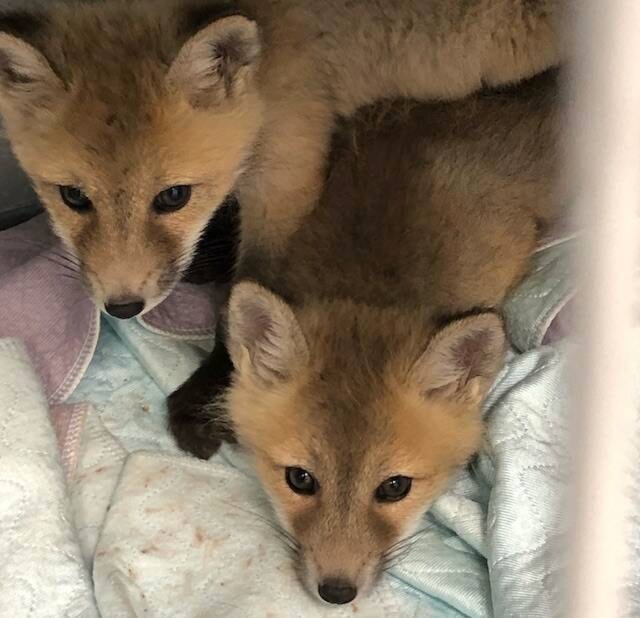Some shaky, lethargic birds being brought to the Medicine River Wildlife Centre this spring are beyond help.
So far, about 20 feathered creatures — from waterfowl to raptors, crows and other corvids — have been diagnosed with avian flu. And all of them had to be put down as “there is no point having them suffer,” said Carol Kelly, executive director of the wildlife rehabilitation centre.
The disease is almost always fatal to birds. There’s no known treatment or cure for the virus that’s impacting the global avian population, as well as some domestic livestock on poultry farms.
Among the sick patients that had to be euthanized at the centre was an owlet, ravens, hawks and geese, added Kelly.
So far, the virus has not been found in songbirds, so Kelly believes it’s still safe to put out bird feeders.
However, five fox kits were recently brought in to the centre and diagnosed with avian flu, which can sometimes skip to other species. Kelly said three of the sick baby foxes died, but two have survived and seem to be improving.
The survivors are now recovering in a quarantine room. Staff who come and go from that chamber have to change their footwear and clothes to ensure they don’t spread the virus, said Kelly.
She advises anyone who’s handled sick birds or animals to wash their hands, although there is a very low risk of human transmissions of this latest strain of the bird flu.
According to information on the website of the U.S. Centres for Disease Control and Prevention, people should ideally wear gloves when handling infected birds, and should also wear a medical face mask, if available. The CDC advises to avoid contact with wild birds, and not touch surfaces that may be contaminated with their saliva, mucous or feces.
Kelly said people can always call the Medicine River Wildlife Centre if they see an animal they believe to be sick, injured or in distress.
Every spring well-meaning central Albertans bring in baby animals that they feel have been abandoned, or have fallen out of the nest. In most of these cases, the parents are around, but not immediately present, she added.
Kelly recalled one woman called her about a young robin that she saw hopping around on the ground, unable to fly. The woman didn’t believe that the bird was O.K. and should be left alone, so Kelly asked her to search up a robin distress call and play it with the volume turned up on her phone.
“She was standing right next to the babies when she played it, and the parents came blowing out of the tree so fast they almost knocked her on the head,” Kelly recounted.
Another time, a “gentlemen farmer” brought a baby fawn to the centre that he thought had been abandoned. Kelly returned with the farmer and the fawn to the spot where he found the baby animal. They played a fawn distress call and saw the doe come bolting across the field.
Kelly believes staying away from wildlife is a good general rule. A group of fox kits in Innisfail have become such a popular draw that Kelly heard some people are starting to feed them. She warned this could become a death sentence for the foxes since they will become habituated to begging food from humans and will eventually be considered a threat.
